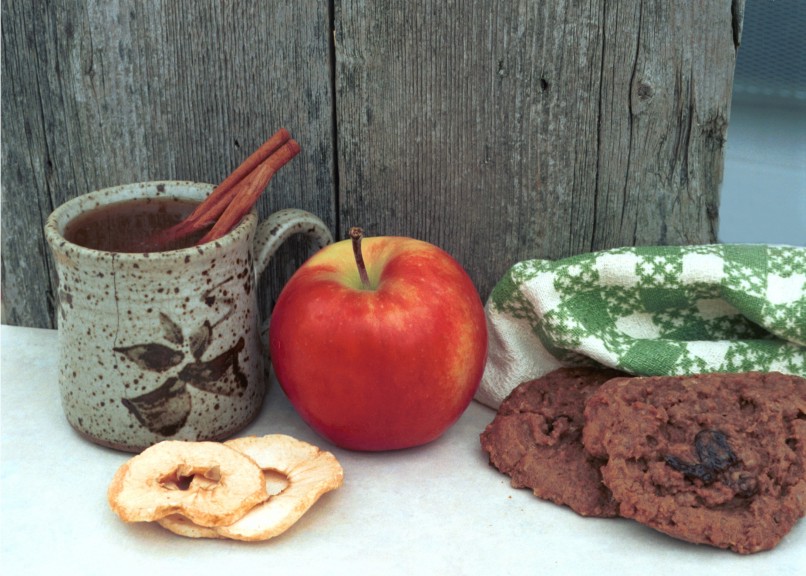

JONAGOLD
| Origin | Cornell University, New York Agricultural Research Station, Geneva, New York. |
| Parentage | Golden Delicious x Jonathan. |
| Availability | Local crop is available October through April. |
| Source | Widely available from commercial nurseries. |
| Quality | Jonagold is a firm, juicy, crisp apple. Like Golden Delicious, it has a very tender skin and a sweet aromatic flavour. Jonagold is best known for its eating quality. However, it is a good candidate for sauce or juice blends when fresh. |
| Fruit: |
| Size | Large to very large; average fruit weight 180-200 g compared to 130-140 g for McIntosh. |
| Surface | Not prone to russet, but will become greasy if over mature. |
| Ground Colour | Greenish yellow. |
| Over Colour | Red, often poorly coloured in warm growing areas. |
| Flesh Colour | Creamy yellow; slow to oxidize when cut. |
| Pressure | 17-19 lbs at optimum harvest date, compared with 15-17 lbs for McIntosh. |
| Harvest Season | Varies with season and location within the Valley; harvest when starch index is between 6 and 9 (1 to 9 scale) usually after Cortland. |
| Storage | When harvested at optimum date, two to three months in cold storage, six to nine months in Controlled Atmosphere at 1şC is recommended. |
| Strains | Striped: Wilmuta and Nicobel, Redblush: Decoster, Fullred: Jonagored and Rubinstar. |
| Tree: |
| Vigour | Medium to strong. |
| Habit | Spreading growth habit with wide branch angles; produces few secondary branches; crop load will bend limbs down and tying up may be required to prevent breakage. |
| Precocity | Very precocious, cropping in 2nd or 3rd leaf on dwarfing rootstock. |
| Fruit Placement | Not a spur type, but has many bourse shoots (short fruit shoots). |
| Bloom Period | Mid to late, similar to Delicious. |
| Pollination | A triploid, so will not provide viable pollen for other cultivars; Golden Delicious will not pollinate Jonagold (incompatible). |
| Nutrition | For good quality fruit, foliar Nitrogen level should be kept at 1.9-2.0% and four or more spray applications of Calcium in the growing season are recommended where bitter pit is a problem. |
| Crop | Heavy; similar to, or greater than, McIntosh. Can become biennial if allowed to overcrop. |
| Synchrony | Requires spot picking for optimum quality. |
| Adaptation | Less winter hardy than McIntosh, hardier than Gravenstein. |
| Disease Reaction | Susceptible to fireblight. Moderately susceptible to mildew and scab (less susceptible to scab than McIntosh). |
| Insect Reaction | Fruit foliage easily bronzed by mites. |
| Rootstock | Has been grown successfully in Nova Scotia on M26 and M9. Dwarfing rootstocks are recommended for ease of harvesting, particularly since spot picking is recommended for optimum fruit quality. |
| Comments: |
| Fruit quality is strongly influenced by fertility. Adequate Calcium levels are important to prevent bitter pit, particularly in light crop years on the large fruit this cultivar can produce. High Nitrogen levels in the foliage will decrease fruit quality, shorten storage life and accentuate Calcium related disorders. Calcium deficiency, excess Nitrogen and/or mite infestation that lead to foliage bronzing will adversely affect fruit quality. It is important to control all these factors. |
|
|
Back |

|
Next |
|